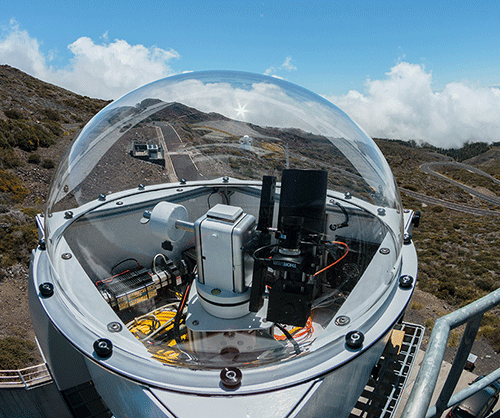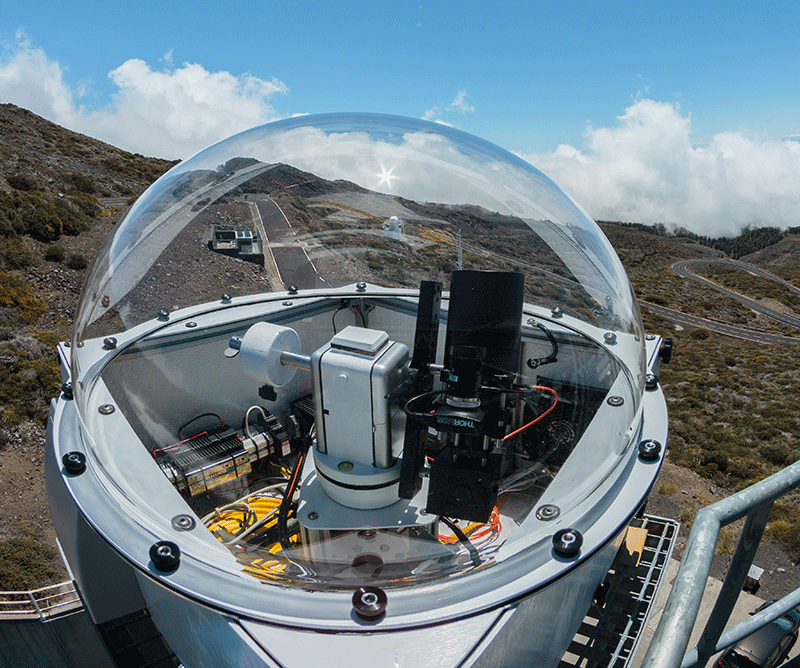Highlights from DAMOP 2015
Columbus, Ohio, hosted over 1100 physicists for the 2015 meeting of the APS Division of Atomic, Molecular, and Optical Physics (DAMOP). The meeting featured talks on topics such as Bose-Einstein condensates, quantum computing, attosecond physics, and tests of fundamental physical laws. There was also a session honoring the 50th anniversary of John Bell’s inequalities, which helped to establish the nature of quantum weirdness. Here is a sampling of the research presented at the meeting.
–David Ehrenstein
Finding Venus with a Laser Comb
Finding a planet outside the Solar System usually means detecting the miniscule wobbling the planet produces in its star, which appears as a tiny, oscillating Doppler shift in the star’s spectrum. The strongest effect comes from large planets close to their stars. To identify an Earth-like planet in an Earth-like orbit—where presumably life could exist—will require measuring a wobbling motion of just 10 centimeters per second (cm/s), 10 times better than current techniques. So David Phillips and his colleagues at the Harvard-Smithsonian Center for Astrophysics are developing a so-called optical frequency comb to improve planet hunting.
The comb produces light consisting of thousands of narrow spectral lines that can be used as an extremely stable and precise “ruler” to calibrate the wavelength scale of the star’s spectrum. But before tackling distant stars, the team has been observing the Sun, trying to spot the 10 cm/s wobble caused by Venus. So far they have detected solar motion down to 30 cm/s. They are now improving their modeling of sunspots and other solar activity that must be subtracted from the data to extract the signal for planet-induced wobbling. After more solar observing time, the team will “low-pass” filter their data to reduce the effects from sunspots and expose longer-period oscillations, including those that match the Venusian year.
Laser Beam Pushes Water
Manipulating fluid flow with laser beams could be useful in microfluidics devices, because light beams are easier to control and reconfigure than mechanical valves. A laser beam can, in principle, transfer momentum to any medium that scatters or absorbs light. But in the past researchers have usually demonstrated light-induced fluid motion at an interface between two different indices of refraction or in a situation that involves heating.
Graduate student Honggu Choi, working with Kyunghwan Oh and others at Yonsei University in South Korea, used tiny particles in water to visualize the flow generated by a near infrared laser beam hitting pure water. With 350 milliwatts of power, the fluid moved at up to 70 micrometers per second. The team ran computer simulations to show that the flow was roughly as expected, assuming the water was driven mainly by the momentum of the laser light, rather than any heating effects. The data are still preliminary, however, and he is working to demonstrate more definitively that heating is not a major factor.
Merging Beams Generate the Ingredients of Life
The earliest chemical reactions leading to the organic molecules of life occurred in molecular gas clouds containing hydrogen, carbon, and other elements, and these clouds later formed stars and planets. Researchers need to understand these reactions to estimate the chemical inventory available to a young planet and to interpret spectra of molecular clouds. But the reaction rates remain uncertain because of experimental and theoretical challenges. Now a team led by Daniel W. Savin of Columbia University in New York has collided beams of carbon or oxygen with molecular hydrogen ions ( ) to measure some of those rates, including their temperature dependence.
The team developed a “merged beams” apparatus that could handle carbon, which is extremely reactive. In this technique, two beams traveling in the same direction with kilo-electron-volt (keV) energies can have relative energies a million times less, allowing them to interact as though they were cold. The researchers studied reactions that produce , , , and and covered the range of molecular cloud temperatures 10–300 kelvin.
Savin explained that extrapolating from previous higher-energy measurements to these temperatures had been uncertain, as was the temperature dependence of the rates. The researchers measured the temperature dependence and also found that theoretical predictions for the production rates of these molecules are off by as much as a factor of 50.





